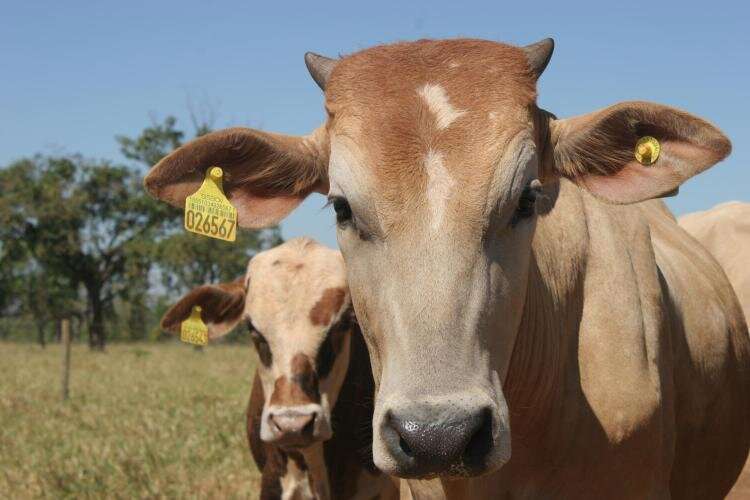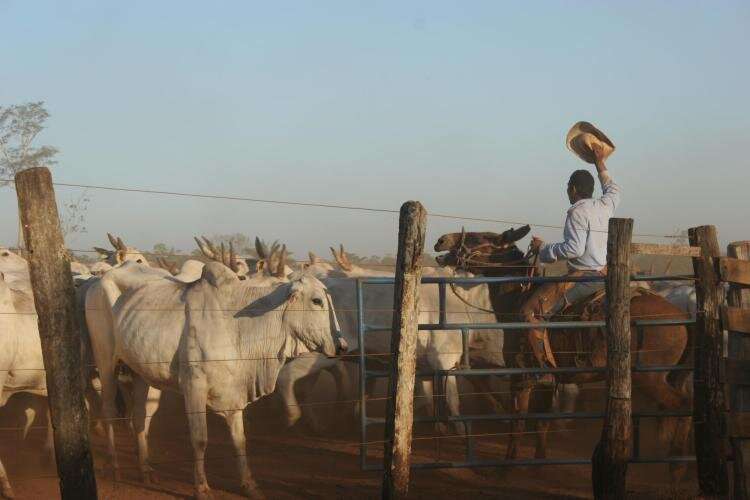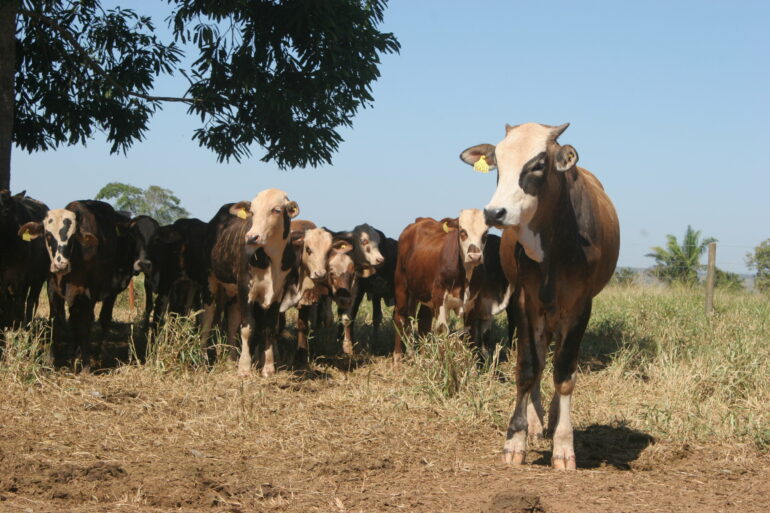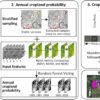Providing customized training to Brazilian ranchers can not only help keep carbon in the ground, but improve their livelihoods and mitigate climate change, according to new research from the University of Colorado Boulder and the Climate Policy Initiative / PUC-Rio.
Published today in the Proceedings of the National Academy of Sciences, the new study analyzes the results of a randomized control trial that examined whether agricultural extension services can help to restore cattle pastures in Brazil. The experiment found that customized assistance, in addition to educational training, successfully supported ranchers in sustainably increasing their cattle production and paid for itself in the process.
In addition, the net impact of the program on greenhouse gas emissions was equivalent to reducing carbon dioxide emitted into the atmosphere by 1.19 million tons—the same amount as the neighboring country of Paraguay emits in a given year.
“It’s an important piece of the puzzle to reach climate goals,” said Barbara Farinelli, co-author of the study and senior agricultural economist at The World Bank. “What’s behind this success is that farmers become the transformational agent for climate goals.”
Brazil is the world’s leading exporter of beef, making it a significant part of the country’s economy and an important livelihood for many rural communities. But cattle ranching has a climate problem: Livestock supply chains are responsible for 14.5% of global greenhouse gas emissions and account for as much as one third of total emissions in Latin America, totaling hundreds of millions of tons of carbon dioxide each year.
Mid-sized ranches, like the ones analyzed in this research, are responsible for one third of Brazil’s cattle production. But unlike the cattle industry in the United States, which is dominated by feedlots, almost 90% of Brazilian beef is pasture- or grass-raised.
“What that means is a huge demand for pastureland. And a lot of that in the last few decades has come at the expense of the Amazon and Cerrado biomes,” said Peter Newton, co-author of the study and associate professor of environmental studies at the University of Colorado Boulder.
The study comes at a time when Brazil’s beef industry is encouraging farmers to return to the Amazon, based on claims by major figures in Amazonian agribusiness that intensive cattle ranching will enable more beef to be produced on less land and therefore reduce deforestation. A main critique of this argument is that most smaller producers in Brazil lack the technical and financial resources to invest in practices that support producing more cattle on less land.
The new study joins a growing body of research demonstrating the importance of customized assistance in helping farmers adopt sustainable practices and increase productivity, and provides sound scientific evidence that can inform policy discussions in Brazil and beyond.
“We found that training plus technical assistance had significant impacts on the rate at which farmers restored pasture, on profits, and on carbon sequestration and emissions,” said Newton.

Cattle at a ranch in Brazil that is implementing more sustainable management practices within the study region. © Peter Newton, CU Boulder
Benefits of one-on-one assistance
Since many Brazilian farmers are not in a financial position to implement new sustainability practices, Brazil has a nationwide policy that gives credit to ranchers and farmers to do so. But researchers found that the barrier to making sustainable changes is not money, but knowledge.
“In this setting in particular, it’s not that the main constraint for improving the operation of the ranch was money, it was really information,” said Arthur Bragança, lead author of the paper and Head of Policy Evaluation, Sustainable Agriculture and Infrastructure, at the Climate Policy Initiative / PUC-Rio.
The aim of the ABC Cerrado program, financed by the World Bank through a grant from the Forest Investment Program (FIP) and implemented by the National Service of Rural Learning (SENAR), is to help farmers get access to the specific information and skills needed to adopt sustainable changes in their cattle production. Since its creation in 2012, the program has trained 7,800 farmers.
For this research project, they set up a robust, randomized controlled trial and recruited 1,369 producers from across the highlands of central Brazil, known as the Cerrado, many of whom had never received previous trainings on sustainable practices. Some 706 of these ranchers attended a 56-hour course in one of the four practices promoted by the program, such as the restoration of pastures, rotational grazing or the use of no-till agriculture.
311 of those 706 producers also received technical assistance, consisting of 24 visits (one visit per month over two years) from field technicians to their property, where they received one-on-one advice. What the researchers found is that while training alone did not improve any of the measured outcomes, producers who also received technical assistance showed statistically significant increases in all measured outcomes.
“The before and after was amazing,” said Farinelli, who visited several ranches during the two-year project. “You could see with your eyes the pasture with applied- and non-applied technologies.”
Ranchers who received one-on-one help also increased their productivity rapidly within a short period of time. Within just two years, these ranchers increased their revenues by 39%—surprising the researchers. In the process of adopting more sustainable technologies, the researchers documented that many farmers also changed different aspects of their operations and adopted better management practices.
“That’s the value of working with this type of primary data in which you go to the field,” said Bragança. “You learn about the behavior of actual people.”

A Brazilian cattle rancher at work. © Peter Newton, CU Boulder
The climate cost of cattle
The cost-benefit analysis of the program was also impressive. Incorporating the cost of carbon, the program generated a climate benefit of $47.6 million per year, making the program cost effective even if the benefits only lasted for one year.
It’s these climate and environmental benefits, which are 10 times higher than the economic benefits to the farmer, that stood out to Bragança, an economist.
“If you increase productivity, yes, the ranchers are going to gain something,” Bragança said. “But the gains for the rest of the society in terms of lower emissions, they’re really higher.”
While this specific program will not continue, similar low-carbon agricultural programs in Brazil have received funding and will continue to explore the benefits of tailored assistance to farmers and ranchers.
“There’s broad agreement among global food system scientists that we collectively need to dramatically reduce our consumption of beef,” Newton said. “But it seems extremely unlikely that beef consumption is going to end in any near-term future. So, it’s also important to be grazing cattle in ways that have a lower environmental impact. If there are ways of producing meat and animal products in ways that reduce their climate impact, then that’s also a part of the picture, in addition to reducing consumption.”
More information:
Arthur Bragança et al, Extension services can promote pasture restoration: Evidence from Brazil’s low carbon agriculture plan, Proceedings of the National Academy of Sciences (2022). DOI: 10.1073/pnas.2114913119
Provided by
University of Colorado at Boulder
Citation:
How cattle ranchers in Brazil could help reduce carbon emissions (2022, March 17)



